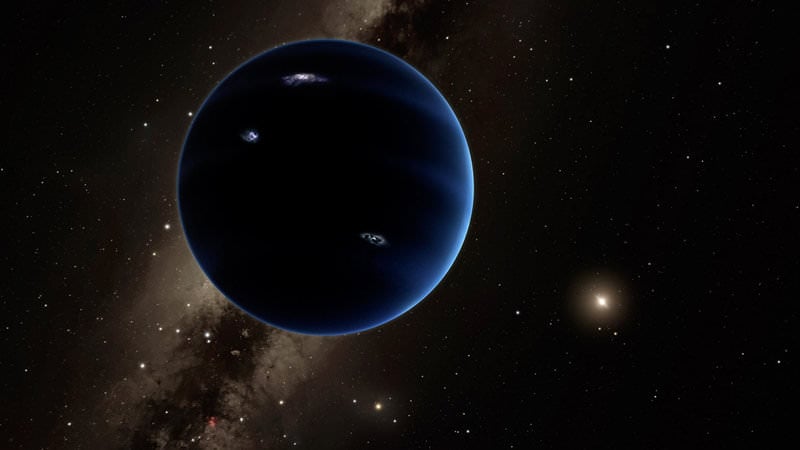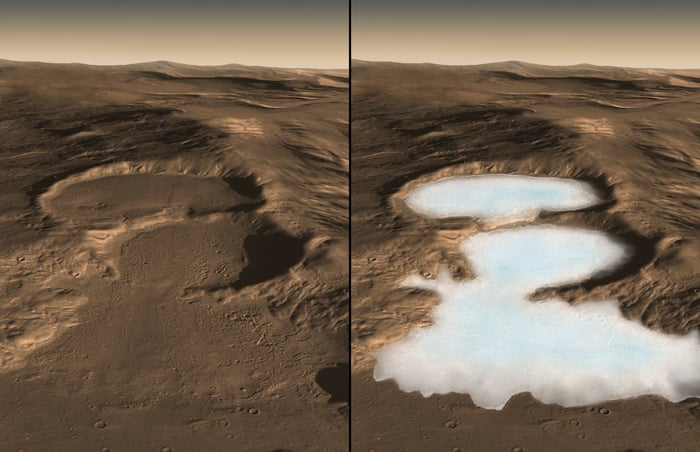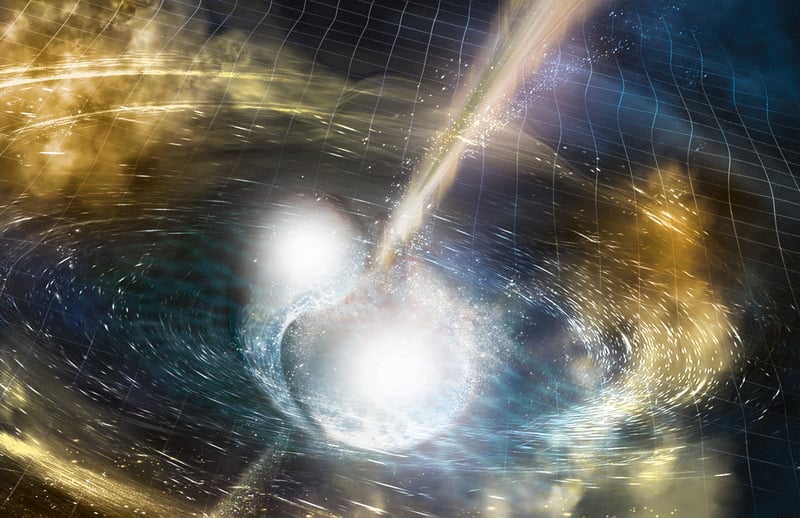
In a recent test at NASA's Glenn Research Center, the X3 Hall-effect ion engine broke the previous thrust and power records established by a Hall-effect thruster.
Continue reading

PLAYALINDA BEACH/KENNEDY SPACE CENTER, FL - The path to an October launch trifecta from Florida's Spaceport was cleared following SpaceX's successful static fire test of the Falcon 9 boosters first stage engines this afternoon, Oct. 26, and thereby targeting Monday, Oct. 30 for blastoff of the KoreaSat-5A commercial telecomsat.
Continue reading

A team of European astronomers recently conducted the first use of AI to identify 56 new gravitational lenses from a mountain of survey data.
Continue reading

The Juno probe has peered deeper into Jupiter's atmosphere than ever before, which has indicated that its magnetic field is askew.
Continue reading

Continue reading

An international consortium of scientists known as Project Blue hopes to crowdfund the creation of a space telescope that will allow us to directly image planets in the neighboring Alpha Centauri system.
Continue reading

Astronomers have found a comet with a possible interstellar trajectory. Comet C/2017 U1 PANSTARRS seems to have come from outside the Solar System.
Continue reading

A new study by an astrophysicists from the Max Planck Institute for Solar System Research shows that the first exomoon ever discovered could actually be a gas giant moon!
Continue reading

A new study led by Princeton University shows that water worlds are likely to be stripped of their atmospheres (and most of their water) before too long
Continue reading

Space scientists are considering how they can catch the charged particles streaming from the Sun with electric sails as a way to propel spacecraft through the Solar System.
Continue reading

Continue reading

Thanks to the over 500,000 pictures taken by the Cassini mission, Google Maps has created a mapping tool that allows users to virtually explore the Solar System.
Continue reading
Continue reading

Continue reading

CAPE CANAVERAL AIR FORCE STATION, FL — As one Atlas rocket carrying a covert spy satellite for the U.S. National Reconnaissance Office (NRO) to monitor Earth for national security purposes faded into cloudy nighttime skies over the Cape in the dead of night shrouded in liftoff secrecy, rocket builder United Launch Alliance (ULA) won another significant Atlas launch contract for NASA's Landsat 9 satellite to monitor the health of Earth's environment.
Continue reading

According to a new analysis, the number of undiscovered and potentially-hazardous asteroids could be lower than previously thought.
Continue reading

A recent study from NASA's Goddard Institute for Space Studies (GISS) has produced a new 3-D model for determining exoplanet habitability.
Continue reading

5 years after a heart throbbing Martian touchdown, Curiosity is climbing Vera Rubin Ridge in search of "aqueous minerals" and "clays" for clues to possible past life while capturing "truly breathtaking" vistas of humongous Mount Sharp - her primary destination – and the stark eroded rim of the Gale Crater landing zone from ever higher elevations, NASA scientists tell Universe Today in a new mission update.
Continue reading

A team of astronomers from the University of Arizona's Lunar and Planetary Laboratory has confirmed that Earth's "temporary Moon" is an asteroid, and not space junk.
Continue reading

Continue reading

Some comets orbit the Sun on a regular basis, but others come in from deep space, a region known as the Oort Cloud. What causes them to make this journey, and will we ever be able to explore the Oort Cloud?
Continue reading

One of the many interesting finds made by the Cassini orbiter before it crashed into Saturn was evidence of a hybrid, toxic ice cloud above Titan's southern pole.
Continue reading

A new study by a team from the University of Michigan has shown how Planet 9 could have prevented TNOs from being destroyed or ejected over time.
Continue reading

A new study by JAXA and international scientists has confirmed the existence of a stable lava tube in the Marius Hills region of the Moon.
Continue reading

A new study by a team of European scientists has shown how metal-eating bacteria could have left their mark on Mars, which could be discovered by future missions
Continue reading

Continue reading

A new study from Brown University has offered a possible explanation for how surface water could have flown on Mars roughly 4 billion years ago.
Continue reading

PORT CANAVERAL/KENNEDY SPACE CENTER, FL - The now twice flown SpaceX first stage booster that successfully delivered the SES-11 UHDTV satellite to orbit Wednesday, Oct 11, sailed proudly back home into Port Canaveral during a beautiful Sunday sunrise, Oct. 15 only three days after it safely landed on a tiny droneship at sea.
Continue reading

Located in the direction of the Virgo constellation, some 68 million light years from Earth, is the barred, spiral galaxy known as Messier 58.
Continue reading

A recent study by UCLA scientists has shown a link between extreme rainstorms on Titan and surface features detected by the Cassini orbiter.
Continue reading

Continue reading

Continue reading

Continue reading

CAPE CANAVERAL AIR FORCE STATION, FL — A clandestine black ops satellite supporting US national defense launched into the black skies over Florida's spaceport in the dead of night Sunday, Oct. 15, on a mission for the U.S. governments National Reconnaissance Office (NRO) that lit up the night skies offering a spectacular vista on its journey to orbit.
Continue reading

KENNEDY SPACE CENTER, FL - Elon Musk's extraordinary vision of an era when re-flown rockets are offered as a 'routine service' rather than the exception is a 'major sea change getting closer' to fruition with each passing day thanks to SpaceX, said SES CTO Martin Halliwell in an exclusive interview with Universe Today, following the stunning sunset blastoff of the SES-11 UHDTV commercial satellite on another 'flight-proven' Falcon 9 booster that also re-landed - thus completing another remarkable round of rocket recovery and recycling or 'launch, land and relaunch!'
Continue reading

According to a recent statement by members of NASA's Human Research Program, the threat of radiation will not stop the proposed "Journey to Mars" and other deep-space missions.
Continue reading

Two new studies, independently of each other, have managed to fins some of the "missing matter" contained within the Cosmic Web.
Continue reading

A new study by an international team of scientists has found a connection between debris disks and giant planets, which could aid in the hunt for exoplanets.
Continue reading

A new report by an international team of scientists has found evidence of hydrothermal activity in an ancient Mars sea, which could mean life once existed there
Continue reading

Up early Sunday morning? Or perhaps, as we often do, you're "pulling an all-nighter," out observing until the break of dawn. Well, the clockwork celestial mechanics of the Universe has a treat in store on the morning of October 15th, as the waning crescent Moon occults (passes in front of) the bright star Regulus (Alpha Leonis the "Little King" or "Heart of the Lion") for the contiguous United States, Mexico and southern Canada.
Continue reading

KENNEDY SPACE CENTER, FL - SpaceX staged a stunning sunset blastoff this evening Oct. 11, of the commercial SES-11/EchoStar 105 HDTV satellite that will serve the everyday needs of millions of customers across North America as it soared to geostationary orbit on a recycled Falcon 9 from the Florida Space Coast.
Continue reading

Continue reading

Continue reading

Continue reading

After examining several samples of Martian volcanic rock, which came to Earth in the form of meteorites, researchers were able to determine more about Mars' volcanic past.
Continue reading

KENNEDY SPACE CENTER, FL - SpaceX is all set for a sunset blastoff Wednesday, Oct. 11 of the commercial SES-11/EchoStar 105 Ultra High Definition (UHD) TV satellite serving North America on a 'used' Falcon 9 booster from the Florida Space Coast - that is also targeted to re-land a second time on an sea going platform off shore in the Atlantic.
Continue reading

Continue reading

Continue reading

In two new studies by international teams of astrophysicists, a wealth of merging black hole pairs have been discovered, which has serious implications for gravitational wave research.
Continue reading

In their latest study concerning Planet 9 , astronomers Brown and Batygin offer the first single and coherent description that accounts for all of the evidence
Continue reading

 Universe Today
Universe Today














































